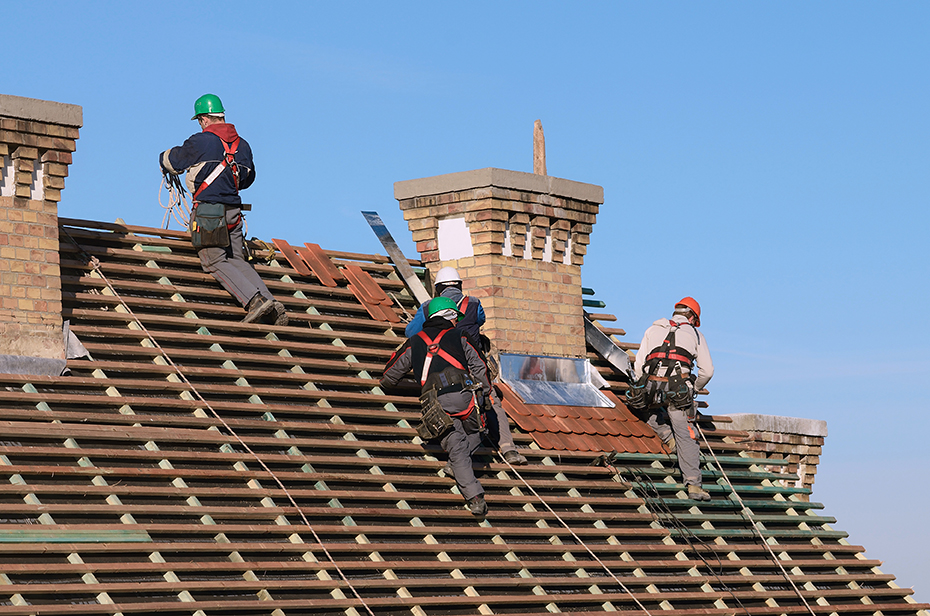At Plan Insurance Brokers we take pride in providing our Commercial Insurance customers with the up to date risk management information relating to their industries’. For that reason we will continue to create our Commercial Series blogs, this week we look at Risk Summary and Cover Checklists for Roofing Contractors.
You can download an example Cover Checklist here, if you would like to know more or wish to have a one tailored by one of our expert insurance specialists please contact us.
Description of Operations
Residential and commercial roofing contractors install, repair, and re-roof structures. Siding, gutters, or insulating material may be installed, as well as simple chimney repairs. The operations differ based on the height of the building and whether the roof is flat or slanted. A roof typically comprises a decking, which is generally made of wood or metal, over which a covering is put. Sheet metal “flashing” is installed at corners and joints, as well as around chimneys. Flat roofs can be “built up” by layering asphalt-laminated felt over asphalt and gravel. Other roofs have shingles composed of asphalt, wood, slate, or concrete. Either type may be covered with rolled roofing of tar paper or heavy rubberised material.
Plan Insurance can help you nail your Roofing Contractors insurance cover... Just fill in our short online quote form, and our professional brokers will be in contact to arrange your insurance.
Property Exposure
Property exposure at the roofing contractor’s location is limited to those of an office, shop, and storage of materials, equipment, and vehicles. The use of flammable solvents, chemicals, or sealants in operations necessitates safe storage and separation from combustibles. Due to the presence of oils, fuels, and other combustibles, fire hazards may be considerable if repair work on owned vehicles and equipment is done in the facility. Any preparation work with hot tar and asphalt heated on site when hot built-up roofing is done enhances the fire danger for both the insured and neighbouring properties. Outdoor-stored equipment and supplies are vulnerable to the elements, vandalism, and theft.
Premises Liability Exposure
Premises liability exposures at the contractor’s office or shop are generally limited due to lack of public access to the premises. Even when not in use, tools, power wires, and scraps all offer a trip danger on the job site. Roofing equipment that falls during operations has the potential to seriously injure occupants or passers-by, as well as cause significant property damage. During the installation procedure, wind or weather may cause damage to the unfinished area of the roof or the interior of the building. Hot tar repair or installation could cause a fire threat to the building or nearby structures.
Environmental Impairment Liability Exposures
Environmental impairment liability exposures range from the disposal of old roofing materials to the disposal of waste tar, asphalt, sealants and adhesives. Removal of asbestos tiles may be a concern, although it is typically non-friable. Documentation of the transport and disposal process is important.
Motor Vehicle Exposures
Motor vehicle exposures are generally limited to transporting workers, equipment and supplies to and from job sites. Hazards vary depending on the type of vehicle and how it is used, as well as the operating radius. Hazards associated with loading and unloading may be considerable. Transport may be risky if hot tar or asphalt is utilised, as an overturn could cause damage to other vehicles. The drivers’ age, training, experience, and records, as well as the cars’ age, condition, and maintenance, are all crucial factors to examine.
Employers’ Liability Exposures
Employers’ liability exposures can be severe. Tripping or abrupt changes in the weather can cause workers to fall from roofs. They may also sustain injuries as a result of falling objects. Lifting, cutting the flashing and other components, and working with hand and power tools are all common dangers. Hot tar and asphalt can cause burns as well as irritation to the eyes, skin, and lungs.
Other Exposures
Contractors’ plant and equipment, items in transit, and contract works are among the other risks. Hoists, ladders, scaffolding, and other similar equipment can be damaged by collision or upset during transit to or from the project, as well as during setup and usage. Tools and construction supplies may be damaged or lost as a result of theft by third parties or workers. Before the installation is complete, the material being installed is particularly susceptible to damage during handling or from wind or rain.
Minimum Recommended Cover
Machinery and Contents, Employee Dishonesty, Contractors Plant and Equipment, Contract Works, Goods in Transit, Deeds and Documents, Public/Product Liability, Employee Benefits Liability, Excess of Loss/Difference in Cover Liability, Motor Liability, Employers’ Liability, and Book Debts.
Other Covers to Consider
Building, Business Interruption with Increased Expenditure, Computers, Employment Practices Liability, and Environmental Impairment Liability.


